I recently had the opportunity to build a multi-channel creatives package for the Arbinger Institute. Here is a breakdown of what Arbinger is and the work I did – along with a short post-mortem after some reflection.
Chapters
- What is the Arbinger Institute?
- Getting started – building multi-channel creatives
- The work – social media posts and creatives
- YouTube
- Post-mortem analysis
What is the Arbinger Institute?
The Arbinger Institute is a global training, coaching, and consulting firm best known for helping organizations and individuals shift from an inward mindset (self-focused, siloed thinking) to an outward mindset (others-focused, impact-aware thinking).
They have published several books, such as Leadership and Self-Deception, host workshops and trainings, offer certifications, and provide coaching and consulting services.
Their target audience includes those in management, executive, and other leadership positions at businesses, government agencies, and non-profits.
Getting started – building multi-channel creatives
Arbinger had previously recorded a coaching session for one of their podcasts, and they wanted to craft unique, tailored content with it for a few major social media platforms – namely LinkedIn, Instagram, Facebook, and YouTube. Additionally, they wanted the focus to ultimately be on who The Arbinger Institute is and the value they bring to their core audience.
Ultimately, Arbinger wanted help growing an active, engaged community that connects with their ideas. They were looking for creative and strategic content that would push their voice forward – rather than simply rehash what they’ve done before.
Following general social media best practices, each post should have a written caption and a visual or video asset. And, adhering to a multi-channel creative strategy, each post should be unique and built specifically for the platform it’s appearing on. No copying and pasting here.
The work – social media posts and creatives
I ultimately created two carousels and two videos. While these utilized different parts of the podcast footage and were targeting somewhat different audiences, they revolved around a central frustration many managers and leaders face: Not feeling heard, respected, or listened to by subordinates, peers, or superiors – and leveraging Arbinger’s principles and frameworks to highlight solutions.
TLDR – Multi-channel creatives social strategy
- Audience: Professionals, especially managers and leaders.
- Tone/Style: Clean, office-friendly, reflective of a team meeting.
- Creative Format: Carousel (high-performing on LinkedIn).
- Hook: Frustration around not getting respect at work.
- Focus: Arbinger principles (e.g. collusion, inward/outward mindset, influence pyramid).
- Post CTA: Try the tips, track your change, and share using #ArbingerChanges.
- Audience: Younger, creative, introspective professionals with leadership interest.
- Tone/Style: Bold, empathetic, polished.
- Creative Format: Carousel with “hard truth” critique up front.
- Hook: Direct quote from podcast as compelling leadership insight.
- Post CTA: Share with someone who needs to hear it.
- Audience: Community-driven, story-focused users.
- Tone/Style: Relatable, story-based, supportive.
- Creative Format: Short video (<2 minutes) that tells a transformation story.
- Hook: Shared frustration with coworkers.
- Post CTA: Reflect on your own mindset shift journey.
YouTube
- Audience: Broader discovery, attention-driven viewers.
- Tone/Style: Fast-paced, bold transitions, curiosity-driven.
- Creative Format: Short (<60s) video; ideally 15–30s.
- Hook: “Are you the good guy at work?” challenges viewer’s self-perception.
- Post CTA: Reflect, shift mindset with Arbinger’s help.
LinkedIn creative work
LinkedIn is THE platform for professionals – especially managers and leaders looking to build their brand, network, and leave their mark on their industry. I aimed for a creative style that felt like something you’d see in a team meeting – a bit more clinical, office-friendly, and professional. I used a lot of quotes from the podcast footage and used it to give context to some of Arbinger’s principles and frameworks (e.g. collusion, inward mindset, outward mindset, influence pyramid).
The first creative is meant to hook those who have felt frustrated by not getting the “proper respect” they deserve – while simultaneously teasing an answer if they keep swiping. I chose the carousel format specifically because they tend to work well on LinkedIn.
LinkedIn post
Have you been frustrated by the lack of respect you receive at work? Try out the tips in our carousel and give it two weeks of honest effort. Then share your own story of how things changed with #ArbingerChanges!
#Leadership #WorkDrama #CareerGrowth
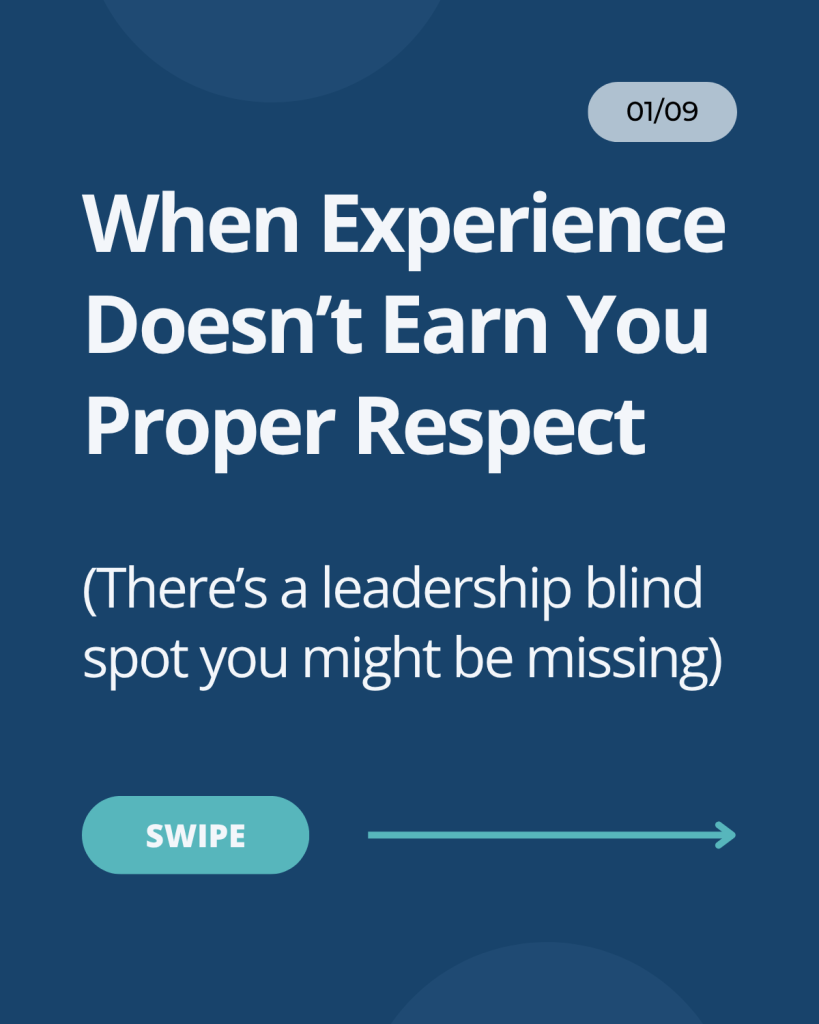

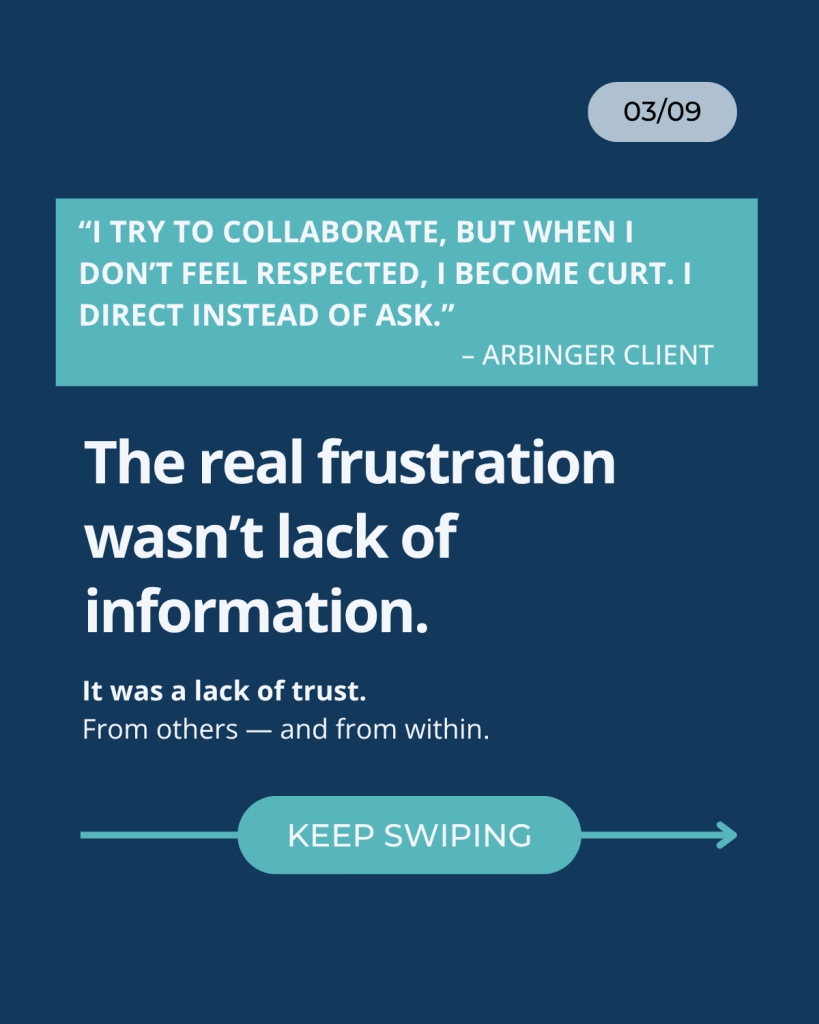
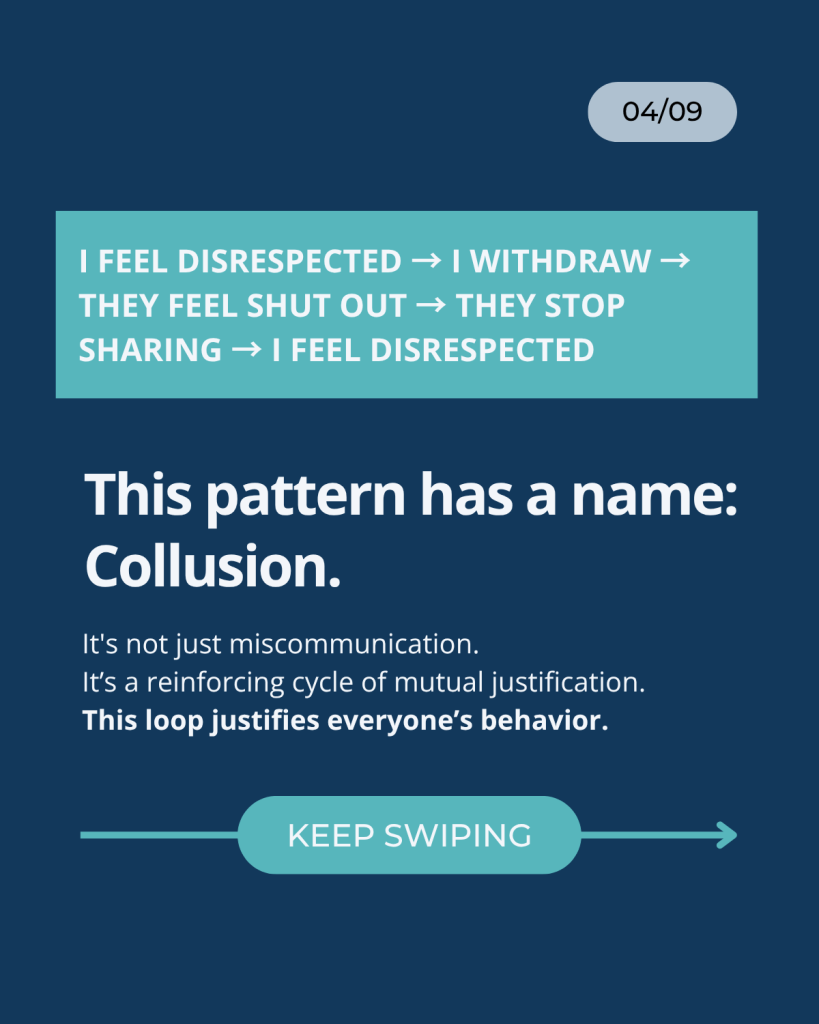
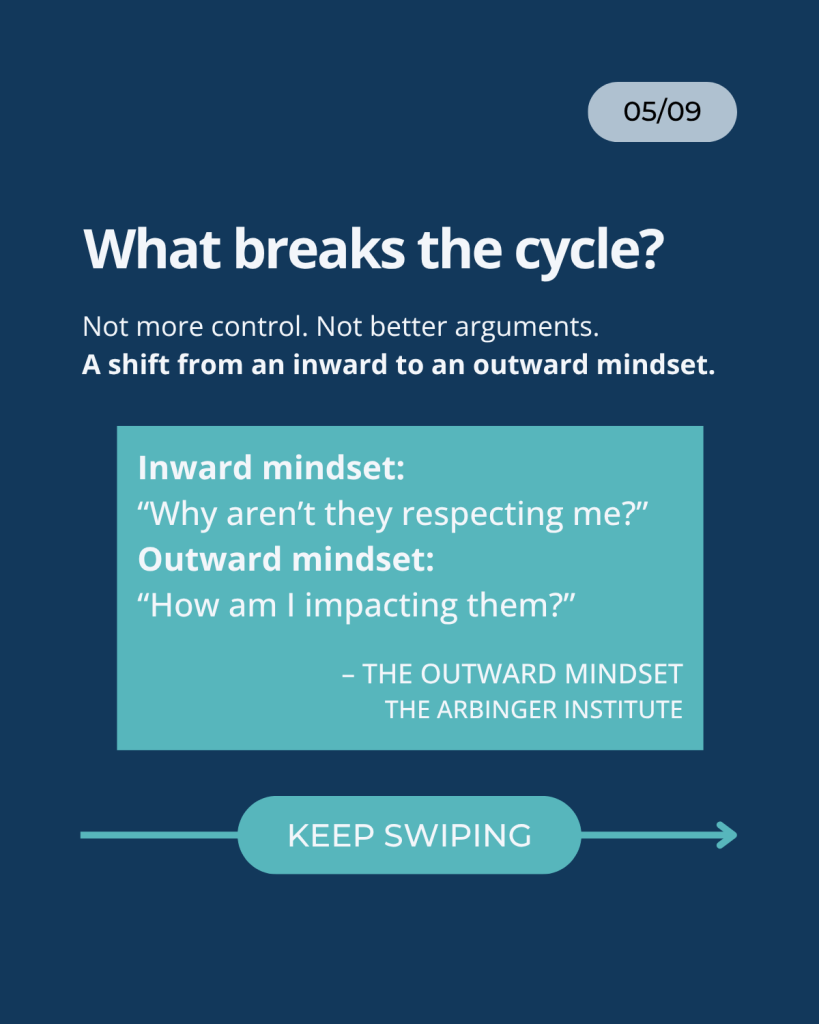
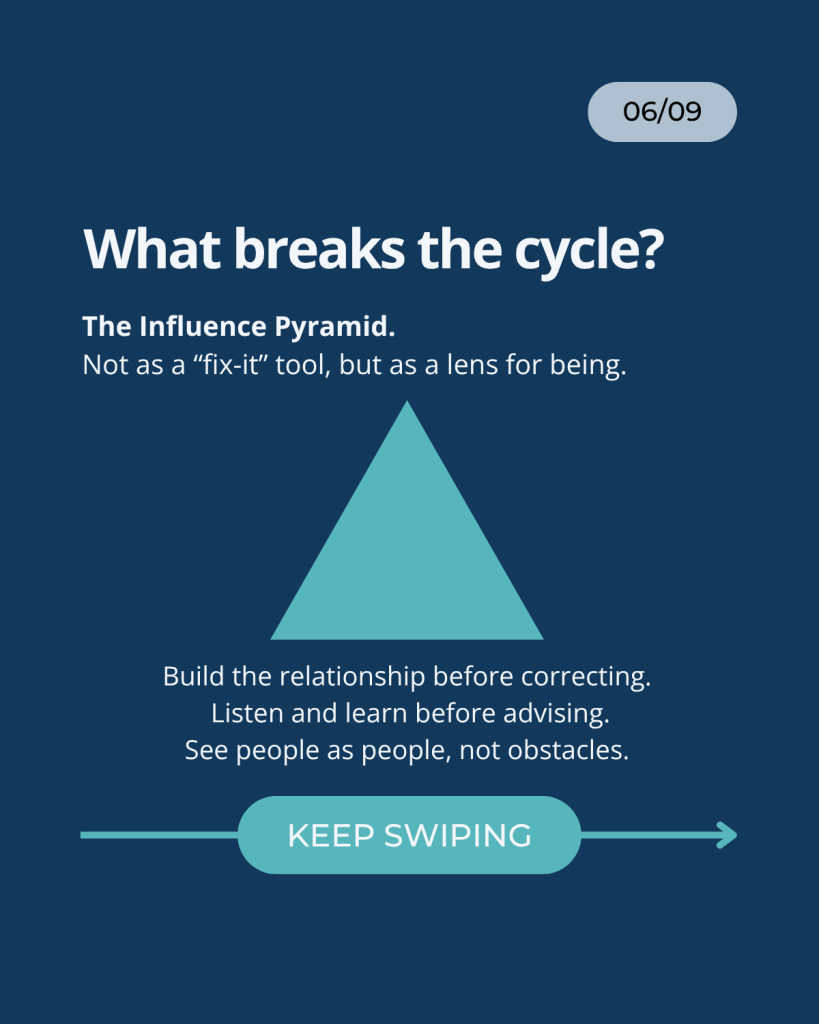
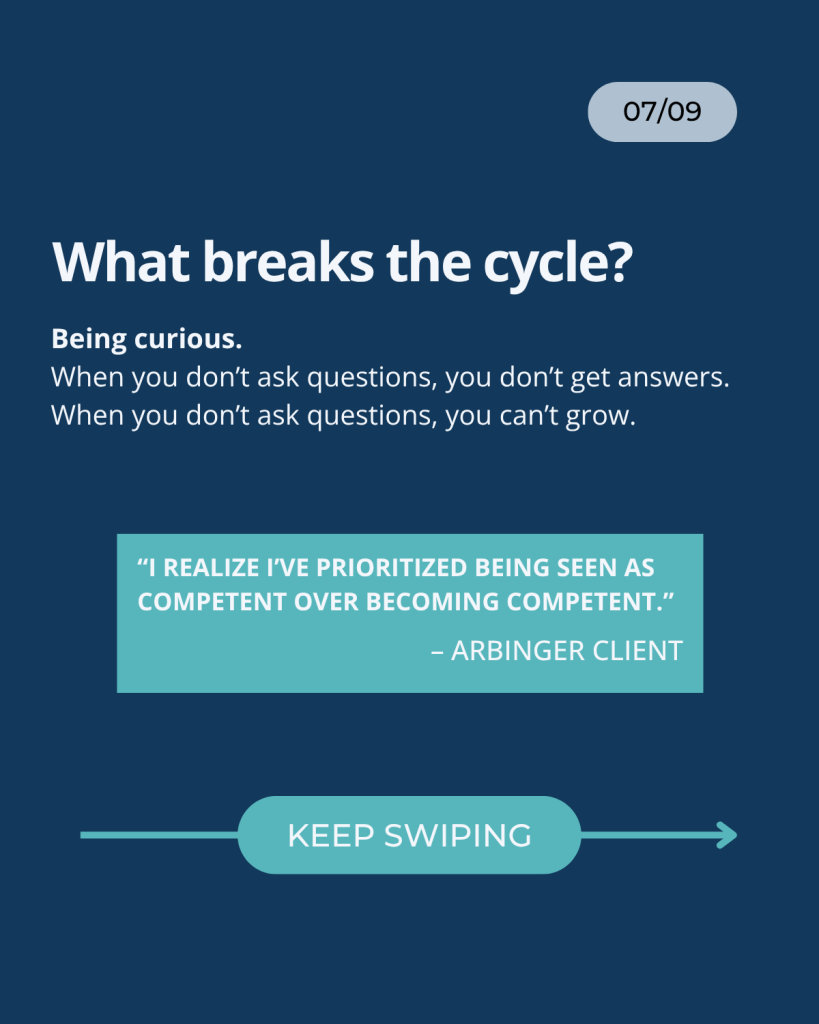
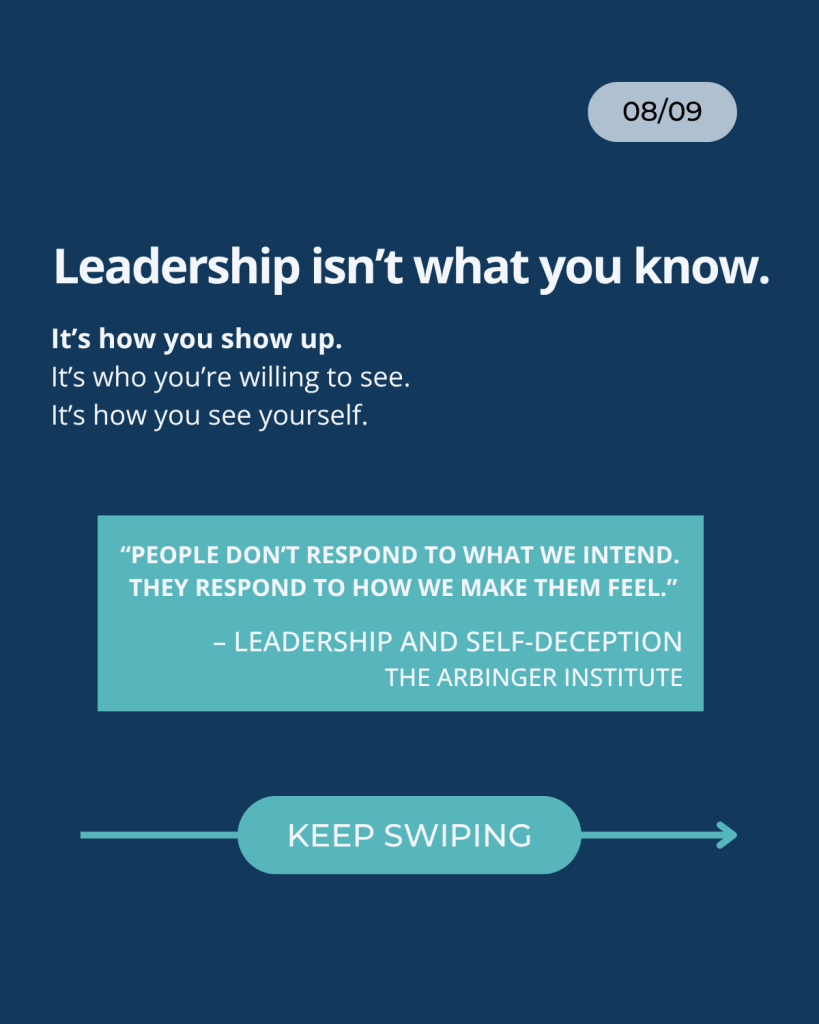
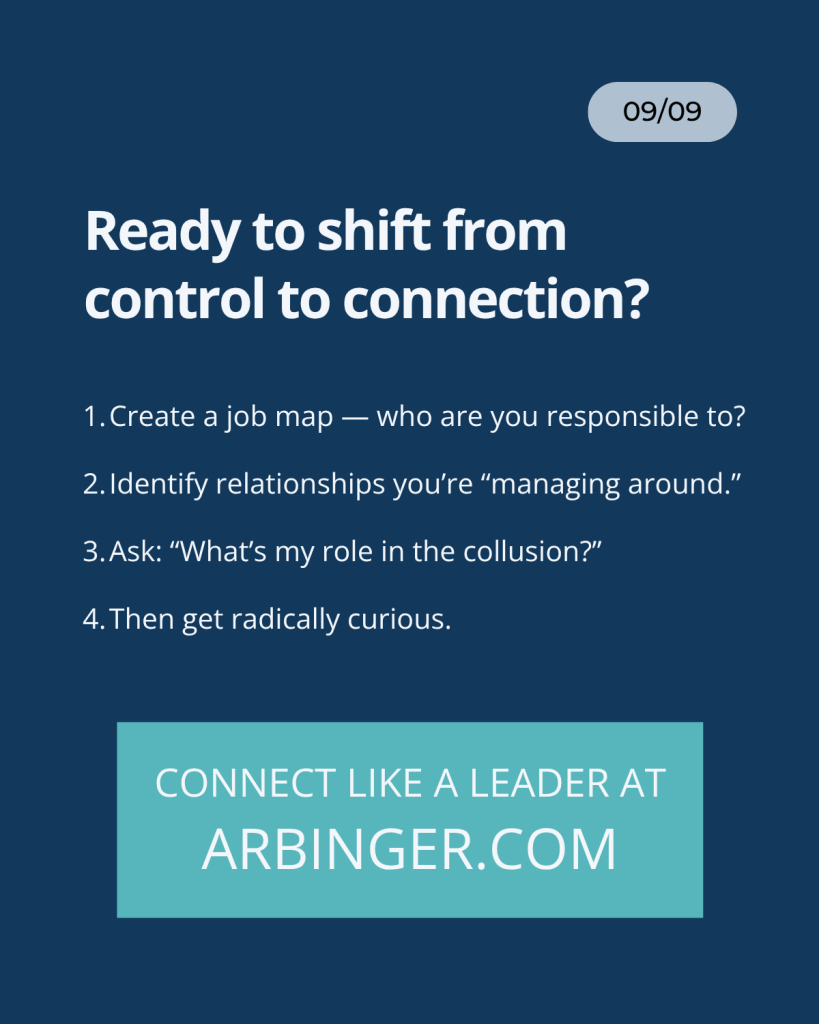
Instagram creative work
I generally think of Instagram as a more creative, empathetic, alternative space – especially compared to LinkedIn. Still, we are attempting to target a managerial and leadership audience – so I tried to balance something a little bolder with something that maintained a professional polish.
Carousels also tend to do well on this platform (it was basically made for them). We come out swinging with some valuable criticism mentioned by Arbinger’s senior consultant during the podcast recording. Given the somewhat younger audience that tends to value “hard truths” while being a bit more introspective in nature, I felt this was a good hook to lead with.
Instagram post
Know someone who needs to hear this? Send it their way! Or maybe it’s something you even needed to hear yourself. We don’t judge. We’re just here to help. ✊✊
#Leadership #Workplace #RealTalk #HardTruths
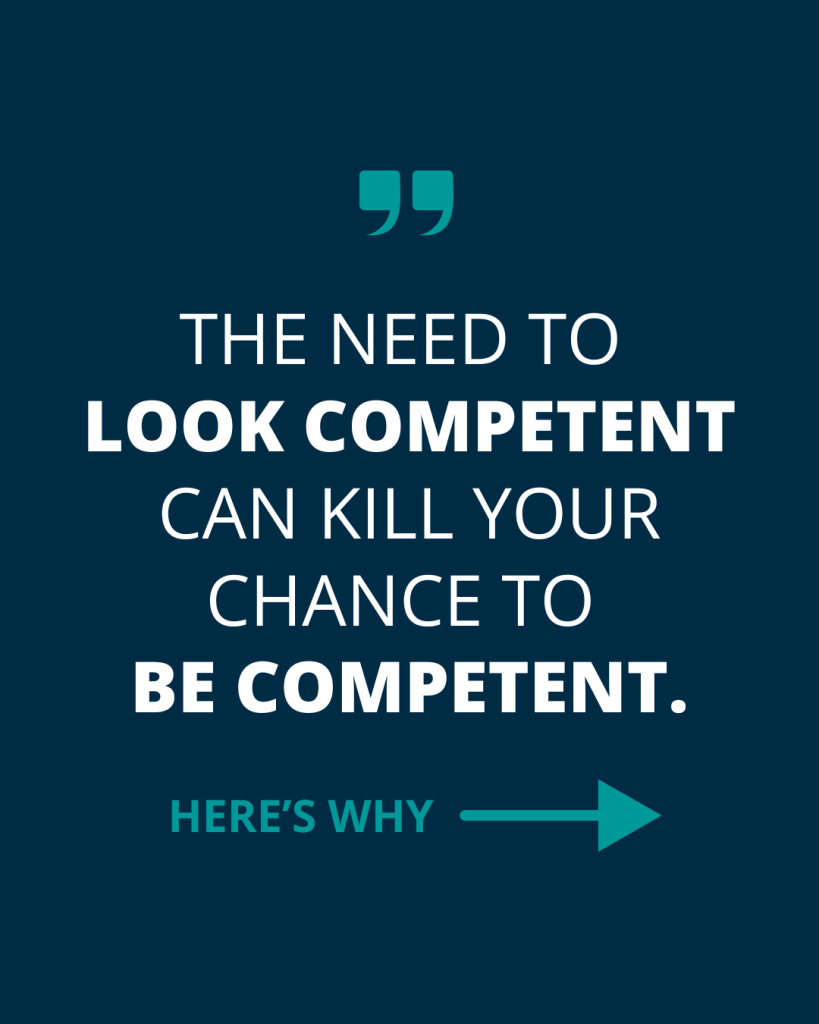
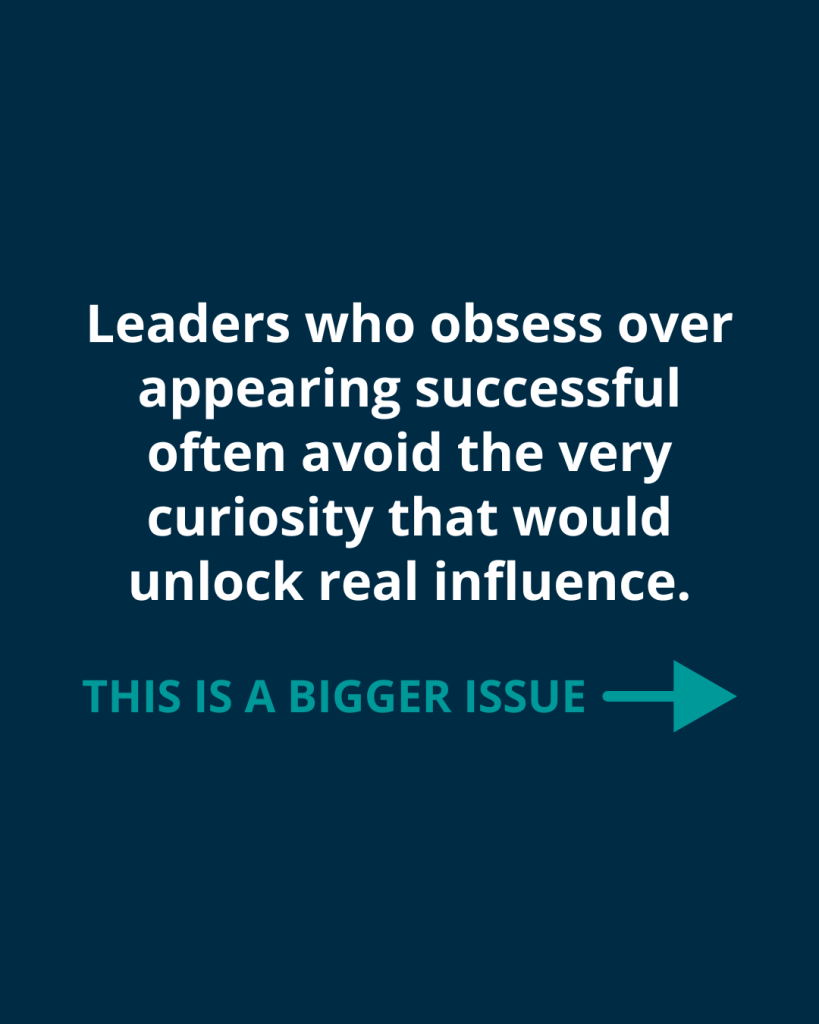
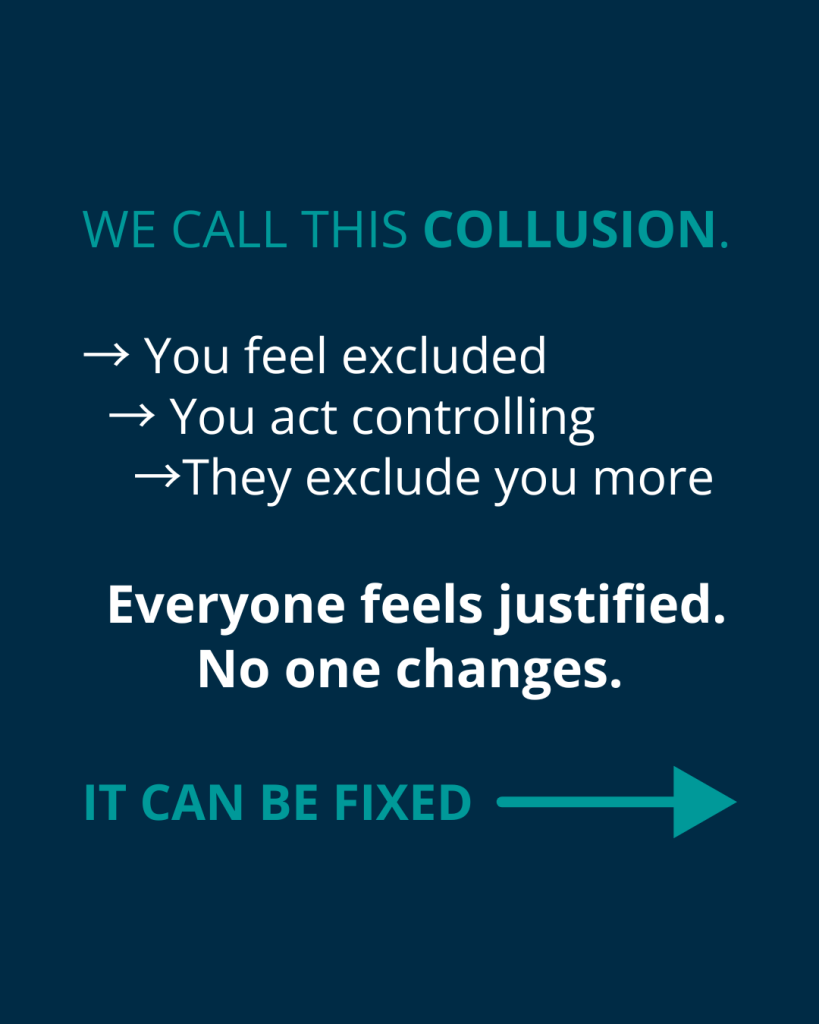
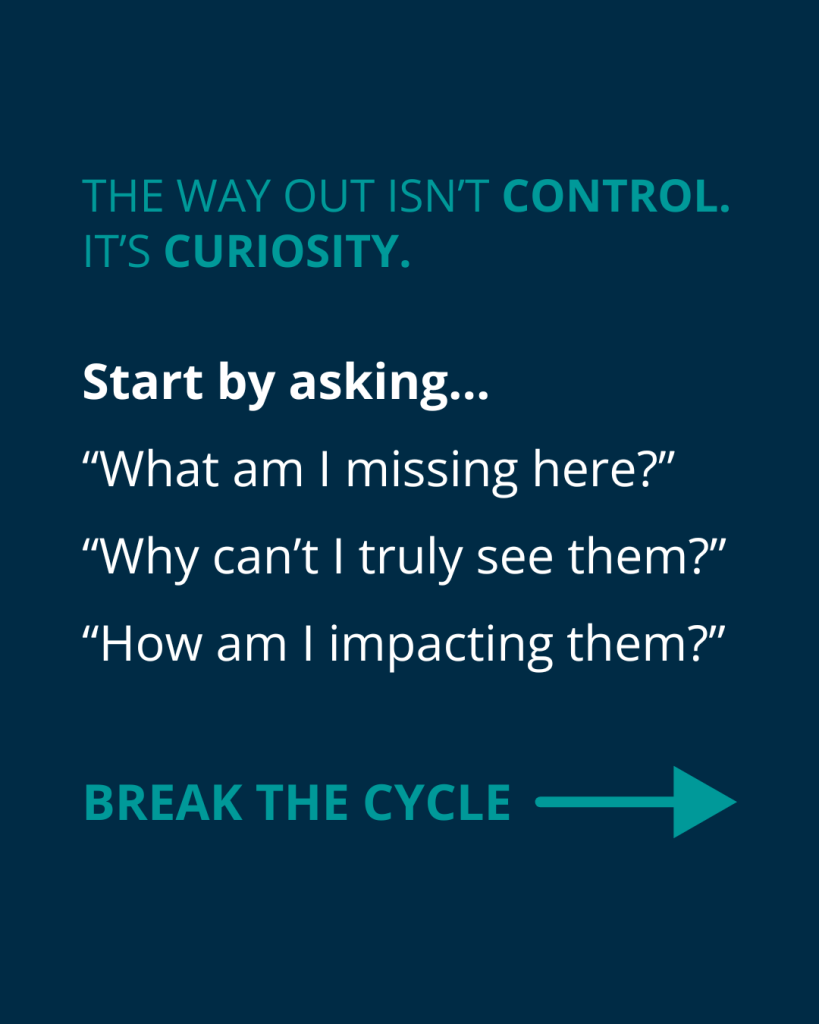
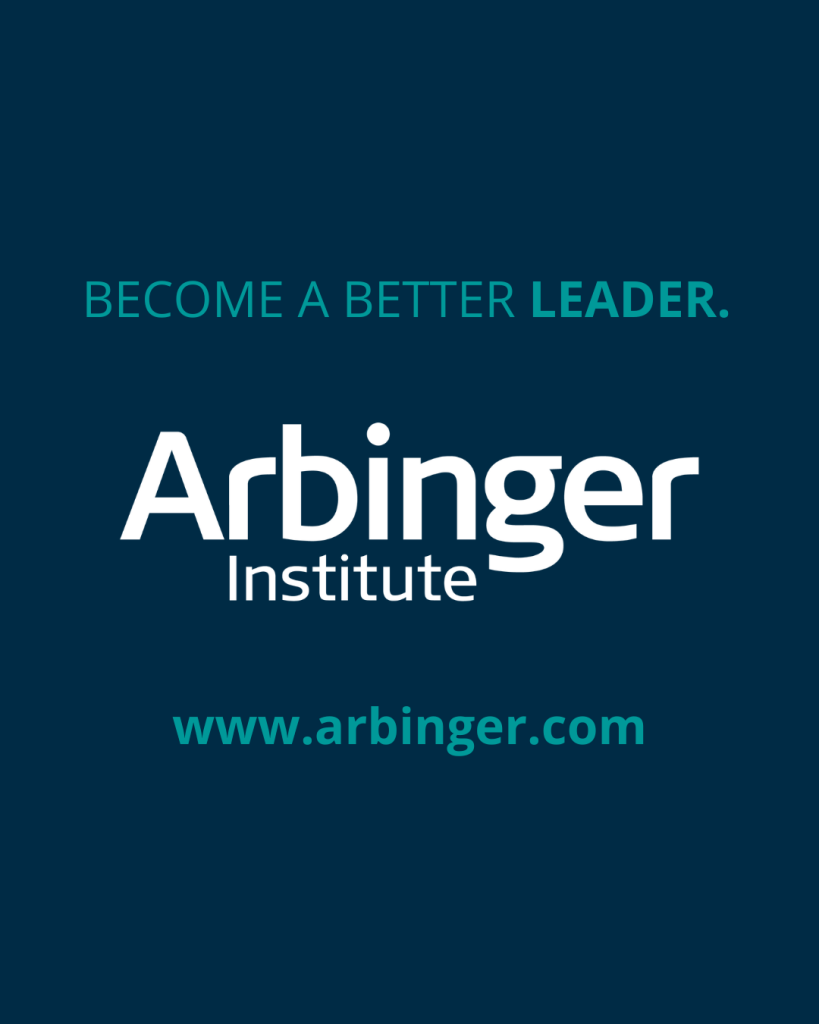
Facebook creative work
Facebook is a good platform for sharing somewhat longer stories with your community – as long as that story is being told with video. I attempted to encapsulate the story of those who need Arbinger’s services in under 2 minutes – and the role Arbinger plays in unlocking better leadership capabilities.
Facebook post
Do you get frustrated with colleagues at work? You’re FAR from alone. Here’s how someone just like you tackled the problem – with the help of Arbinger. How are you switching from an inward to an outward mindset?
#Leadership #Workplace #CompanyCulture
YouTube creative work
YouTube shorts are one of the best ways to get new eyeballs on you. My general preference is to aim for videos closer to 15-30 seconds – but I truthfully found it challenging to say what I wanted to say in that amount of time. Luckily, I at least managed to keep it under 1 minute.
The opening hook is meant to build connection (don’t we all see ourselves as the good guy?) while also sparking curiosity (“What do you mean you want them to say that about you?”). In general, this creative moves much quicker and has much bolder transitions to fit the type of content that performs well on YouTube.
YouTube post
Video title: Are you the good guy at work?
Video description: We all like to think we’re the good guy at work. But if you’re butting heads, it might be a good idea to self-reflect. The Arbinger Institute can help you ask the right questions – so you’re shifting yourself from an inward mindset to an outward mindset.
#WorkDrama #CompanyCulture #Leadership
Post-mortem analysis of these multi-channel creatives
After taking some time to breathe after putting these creatives together – and coming back to it with fresh eyes – there are several changes I’d make.
TLDR – How to improve your multi-channel creatives (and yourself)
Video Length Improvements
- Goal: Would have shortened Facebook and YouTube videos to ~1 min and ~30 sec respectively to cater to shorter attention spans.
Creative Testing & Hook Strategy
- Future Plan: Wanted to create multiple video versions to test hooks and performance.
- Current Challenge: Unsure which hooks work best; interested in data-informed creative decisions.
Design & Polish
- Limitation: Not a trained graphic designer or videographer.
- Execution: Used and customized templates, but recognizes a lack of professional-level polish.
- Wishlist: Would love for a design/video team to elevate the creative assets.
Skill Development
- Reality Check: Content marketers are often expected to wear many hats.
- Growth Mindset: Actively improving design and video skills.
- Takeaway: Arbinger project has been a valuable opportunity to grow creatively and technically.
I think, if I had more time, I would have reworked both the Facebook and YouTube videos so they were closer to 1 minute (instead of nearly 2 minutes) and 30 seconds (instead of nearly 60 seconds), respectively.
Ultimately, I would have also liked to create multiple versions of the videos, at least, to test different hooks and find high performers. I’m not sold on what hooks might perform best and would love to gather the data to make more informed decisions for this audience!
Finally, I will note that I am not a graphic designer or a videographer. I used templates for the carousels (though I did modify them a fair amount) and there is a certain amount of polish that I believe is missing in all of the multi-channel creatives. I would love to see them reworked by an actual graphic design and video effects team.
That said, these days people seek an all-in-one package when it comes to content marketing. So these are skills I am actively working on – and would encourage any others without them to start building them as well. This project from Arbinger has been great for stretching my technical and creative muscles!
Frequently asked questions about multi-channel creatives
How do you create effective multi-channel content from one source of material?
Start by deeply understanding your source. I was given raw coaching footage from Arbinger and full access to their published materials. From that, I created four original platform-specific posts – each with its own hook, tone, and format – tailored to LinkedIn, Instagram, Facebook, and YouTube.
What’s the best way to tailor content for different social platforms?
Consider audience mindset, content norms, and platform strengths:
- LinkedIn favors carousels with professional tone and actionable insights.
- Instagram rewards bold visuals and emotionally resonant “hard truths.”
- Facebook supports story-driven video content that sparks community connection.
- YouTube Shorts need fast pacing, curiosity hooks, and visual impact.
What kind of content resonates with leadership and management audiences?
Focus on pain points they actually feel, like “not being listened to at work,” and pair that with frameworks or tools they can apply. Arbinger’s mindset-based leadership models gave me a strong foundation to turn abstract ideas into relatable, problem-solving content.
How do you design high-impact social posts if you’re not a designer or video editor?
Use templates – but make them your own. I modified carousel and video templates to suit Arbinger’s tone, while acknowledging that a pro design/video team could bring extra polish. It’s okay to start where you are, especially if you’re focused on storytelling and structure.
How can you improve social media content performance?
- Test multiple hooks per platform to see what really connects.
- Tighten up videos for shorter attention spans.
- Refine visual polish with design/video experts.
- Track engagement metrics to inform future iterations.
How can content marketers expand their skillset?
In today’s market, creators are expected to be multi-skilled. I would encourage you take on passion projects that force you to try new things, test new ideas, and build new skills. This project pushed me to grow in both creative direction and technical execution – building assets, writing captions, editing visual content, and strategizing distribution – all while aligning with a leadership-focused brand.